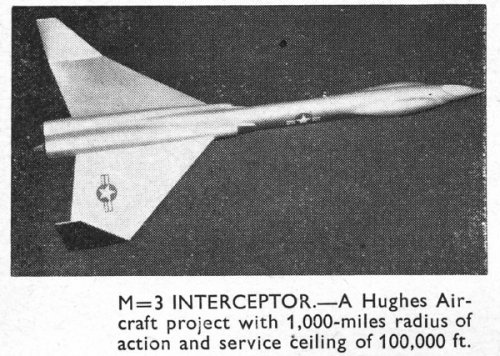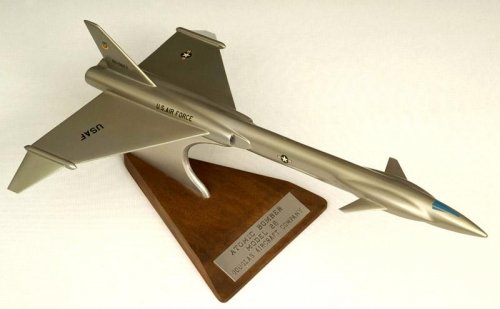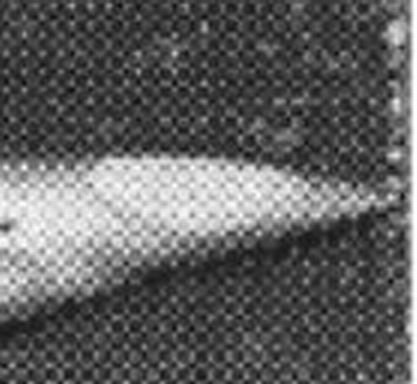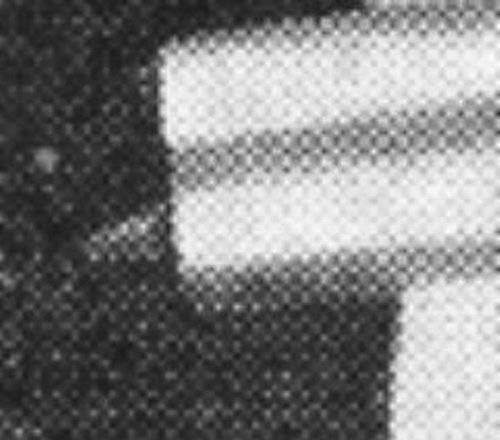You are using an out of date browser. It may not display this or other websites correctly.
You should upgrade or use an alternative browser.
You should upgrade or use an alternative browser.
Hughes MACH 3 Interceptor
- Thread starter Barrington Bond
- Start date
Wow! I'd sure like to find a three-view of that monster. I wonder if it was created in connection with the F-108 competition?
- Joined
- 26 May 2006
- Messages
- 32,648
- Reaction score
- 11,841
Hi,
I think the Douglas Model-26 Atomic Bomber was based on or developed from Hughes
design,so the "Model-26" here is reference to Hughes Model-26.
I think the Douglas Model-26 Atomic Bomber was based on or developed from Hughes
design,so the "Model-26" here is reference to Hughes Model-26.
Attachments
MaxLegroom
Why not?
- Joined
- 28 December 2013
- Messages
- 158
- Reaction score
- 45
That's all well and fine, but with no canards, it would have been interesting to fly, to say the least...
thefrecklepuny
ACCESS: Confidential
- Joined
- 19 January 2008
- Messages
- 115
- Reaction score
- 71
Firefox anyone?
- Joined
- 3 June 2011
- Messages
- 17,306
- Reaction score
- 9,006
MaxLegroom said:That's all well and fine, but with no canards, it would have been interesting to fly, to say the least...
Most deltas don't have canards and they seem to manage.
shedofdread
ACCESS: Top Secret
- Joined
- 14 November 2009
- Messages
- 582
- Reaction score
- 353
sferrin said:MaxLegroom said:That's all well and fine, but with no canards, it would have been interesting to fly, to say the least...
Most deltas don't have canards and they seem to manage.
Whilst it's quite possible that there's either something VERY heavy in the aft end of the fuselage OR the forward fuselage is quite light but to me it looks as though they would need canards to bring the N/P forward enough that it wouldn't be excessively nose heavy.
Another possiblity is that the canards are missing [for whatever reason] from the first photo in the thread...
- Joined
- 1 May 2007
- Messages
- 2,458
- Reaction score
- 1,450
There's a simpler way of telling that it is not upside down. The USAF star on the fuselage is right side up.
In that case, then this image is flipped horizontally, since the USAF star is on the starboard wing, unlike the image of the Douglas model, which we know is correct, because we can read the lettering on the stand...
cheers,
Robin.
- Joined
- 16 April 2008
- Messages
- 8,364
- Reaction score
- 10,212
Assuming the model maker put the markings on correctly (national insignia on upper left wing and lower right). The model maker might have got it wrong, but it is possible the image has been flipped for some reason.
- Joined
- 11 March 2006
- Messages
- 8,606
- Reaction score
- 3,048
- Joined
- 16 April 2008
- Messages
- 8,364
- Reaction score
- 10,212
Jemiba said:And there's something protruding from the nozzles, which could be a fin, as on the bomber,
with the model put on its back. But then, of course, the US star actually would have been
applied the wrong way.
Could be a ventral fin.
- Joined
- 9 October 2009
- Messages
- 19,838
- Reaction score
- 10,326
Kadija_Man said:What are the bulges on the forward fuselage for?
Something like an RCS system, perhaps?
- Joined
- 25 June 2014
- Messages
- 1,564
- Reaction score
- 1,453
shedofdread said:sferrin said:Most deltas don't have canards and they seem to manage.
Whilst it's quite possible that there's either something VERY heavy in the aft end of the fuselage OR the forward fuselage is quite light but to me it looks as though they would need canards to bring the N/P forward enough that it wouldn't be excessively nose heavy.
All that lead shielding next to the reactor, perhaps?
A lot depends on the way the wing is stabilised in pitch. If the rear section has reverse camber then the centre of lift can be surprisingly far forward, as the rear will spend quite a lot of time actually pushing downwards. This also leads to a large wing area, which is consistent with the model. Such a forward position would also help keep down the size of the tail fins needed for directional stability.
Another possibility is that those "duck-head" bulges at the front provide significant lift and a degree of sideways drag reduction in yaw, kind of proto-chines.
Similar threads
-
-
-
Rolls Royce 3rd Generation Lift Jet Transport
- Started by Barrington Bond
- Replies: 1
-
-




